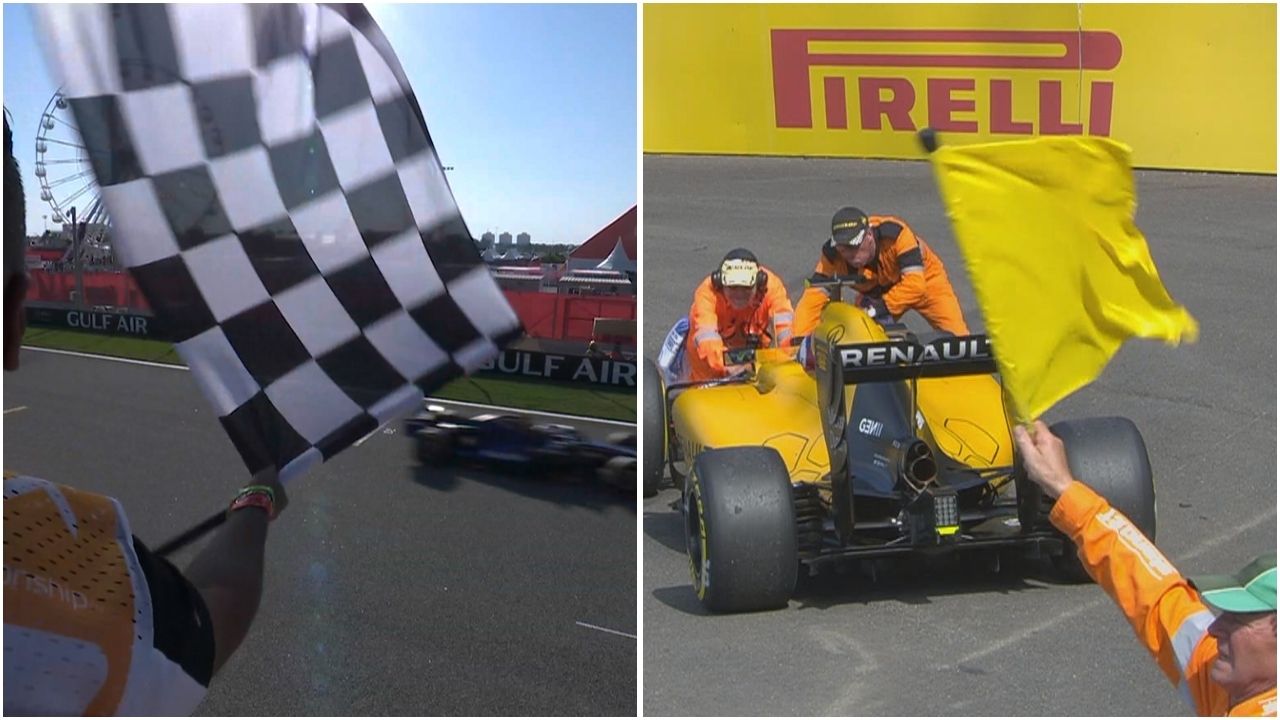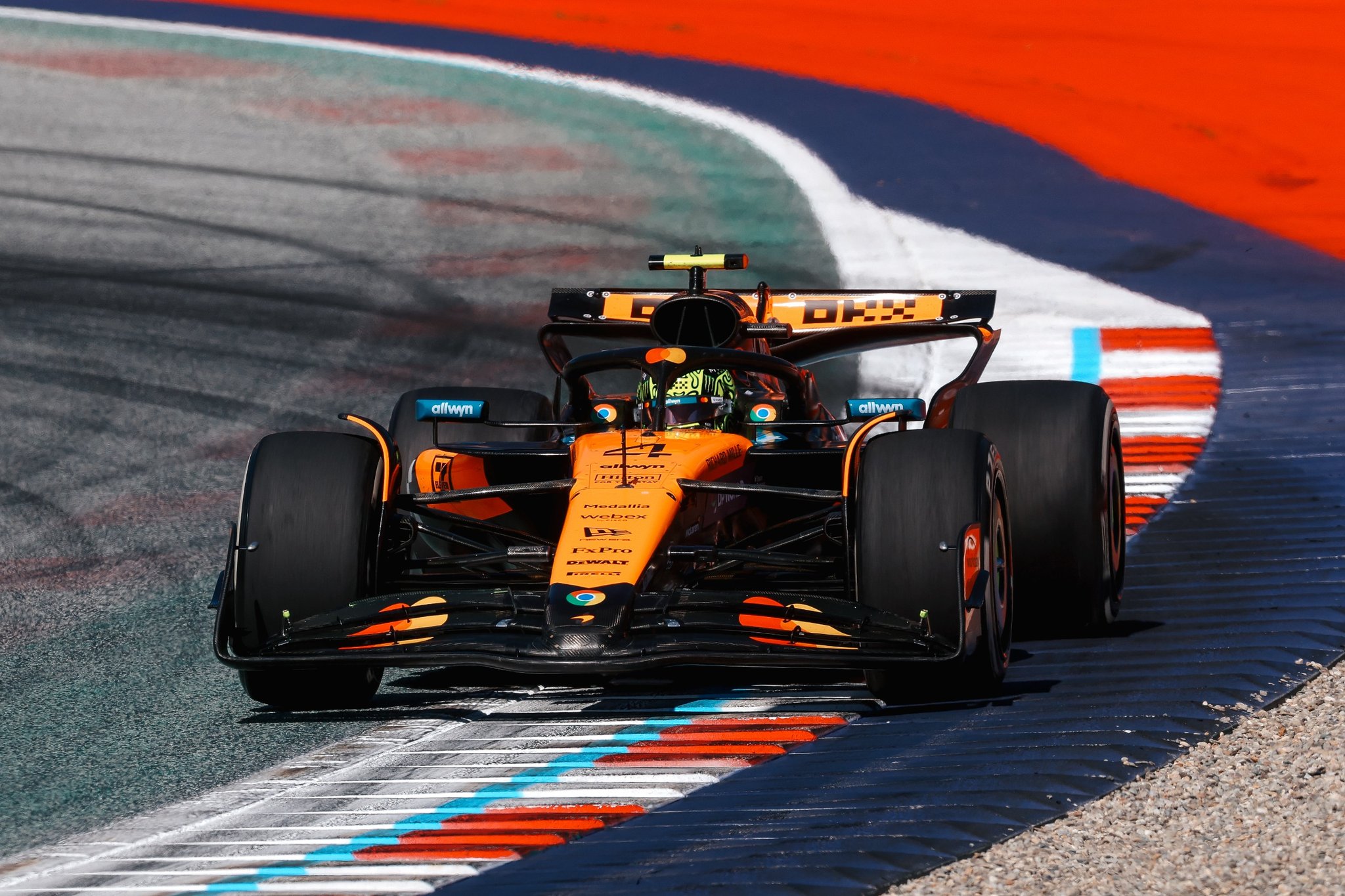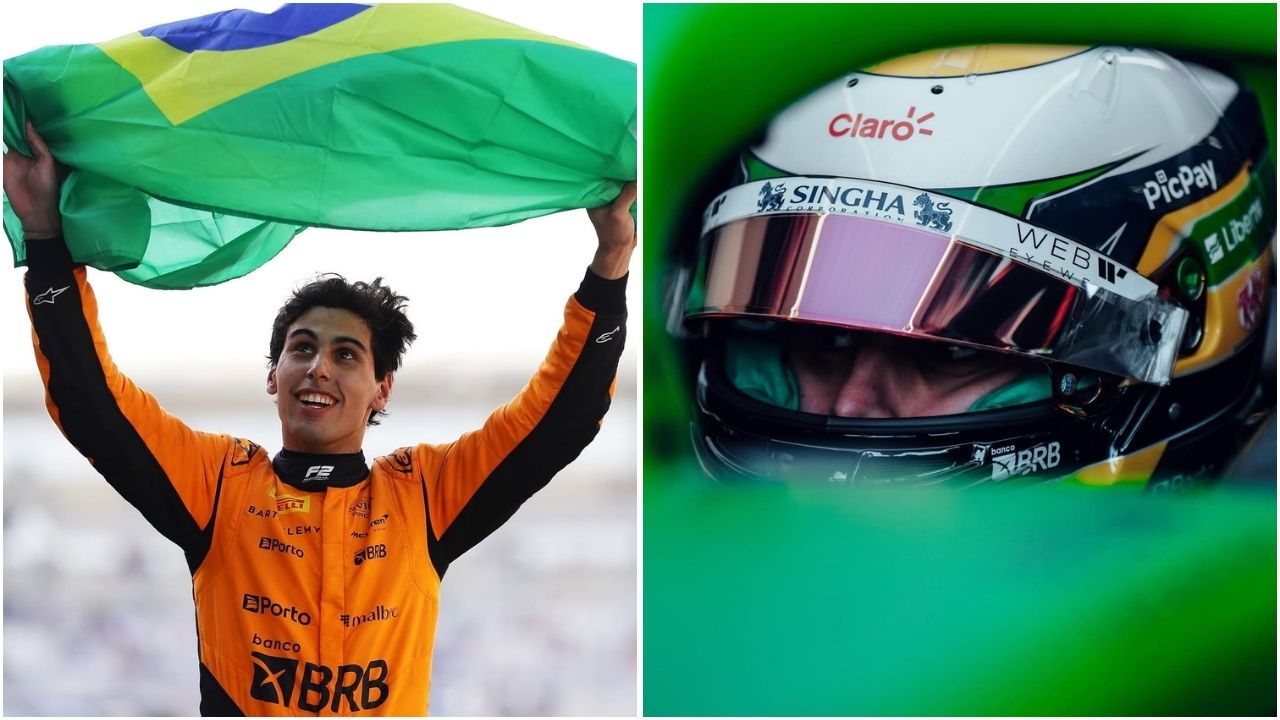Communication plays a big role in F1. While teams and drivers now have the ease to communicate through radio, that is not the same when it comes to the officials. They still use the oldest method of communication in motorsports history: flags.
Flags have been a part of motorsports for the past century, with their first use in 1906. The Vanderbilt Cup used a chequered flag to indicate the race winner for the first time, and the tradition has since followed. However, there are many types and colors of flags that can be noticed in F1, which can be rather confusing to understand. These are sent out by the race officials to the driver(s). This indicates that there is a potential issue on the track or with a particular car, and sometimes the driver.
But these are largely circumstantial. Some of the flags are for the entire grid, while some target a specific driver. Flags are still used in the sport because it can be hard to read signs at high speeds for obvious reasons. The high-contrast colors of flags make it rather easier for the drivers to follow the instructions from the race director.
What do the flags in F1 mean?
There are several types and colors of flags that are used in F1. Some of these are bold colors, while others can contain a mix of two to indicate potential issues. Let us get into it one by one.
Green Flag
The green flag is rather easy to understand. It is waved after the formation lap, right before the beginning of the race, to mark that the track is clear to be raced on. It is also waved to mark the start of practice and qualifying sessions, or right after a yellow flag incident.
Yellow Flag
A yellow flag indicates that there is potential danger on the track ahead. Marshals wave this during sessions to indicate degrees of danger.
A single waved yellow flag means the drivers must reduce speed and cannot perform overtakes. They should also prepare to change directions because of a hazard on the track.
Meanwhile, a double-waved yellow indicates that the drivers should slow down significantly because of a major obstruction on the track. This could also mean that marshals are near the track.
Yellow Flag w/ Red Stripes
A yellow flag with red stripes indicates a loss of grip on the track or track deterioration because of oil or water spillage.
Red Flag
The red flag means a complete stop to the session. Mostly waved because of a major crash or extreme weather conditions. Once waved, the drivers are supposed to slow down and make their way back into the pits and await further instructions.
White Flag
The white flag is usually waved at a specific driver to indicate that there is a car moving slowly ahead. It is commonly noticed during free practice sessions.
Blue Flag
The blue flag indicates a driver that they will be overtaken by another car soon. However, it can also instruct them to move out of the way if they are about to be lapped by the car behind during a race.
Black and Orange Flag
The marshals sometimes wave a black flag with an orange disc in the middle at an F1 driver. This indicates that there is a mechanical issue with their car and that they should pit to repair.
Black and White Flag
Unlike the chequered flag, the black-and-white flag is diagonally divided. It is shown to a driver as a warning when they have been booked for several unsportsmanlike behaviors during the race. This could be followed by a punishment.
Black Flag
The infamous black flag is not a common appearance in F1. It is used to indicate that a driver has been disqualified from a race and is ordered to return to their garage.
Chequered Flag
The chequered flag in F1 is waved, marking the end of any session, be it the free practice, qualifying, or the race.



